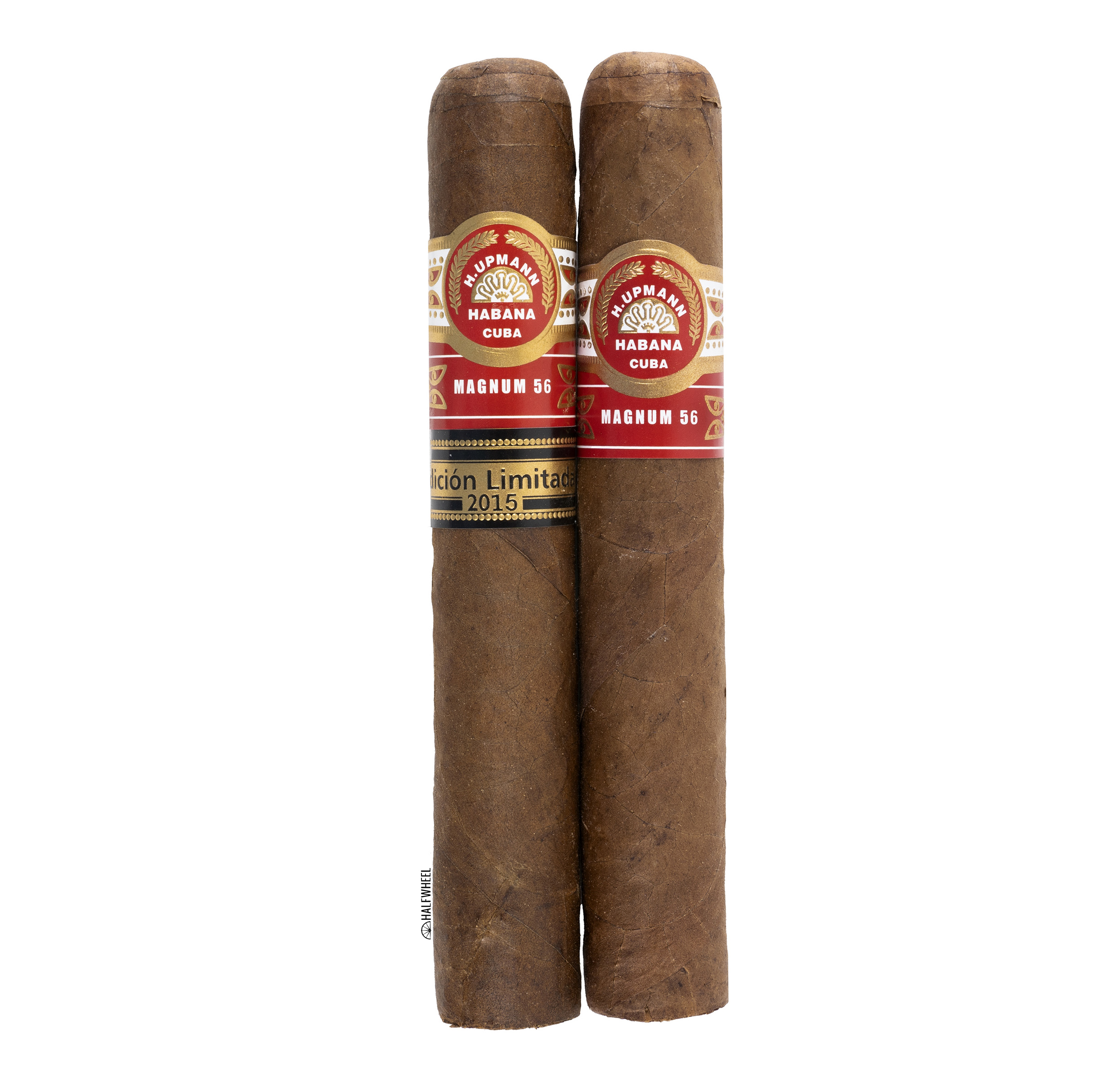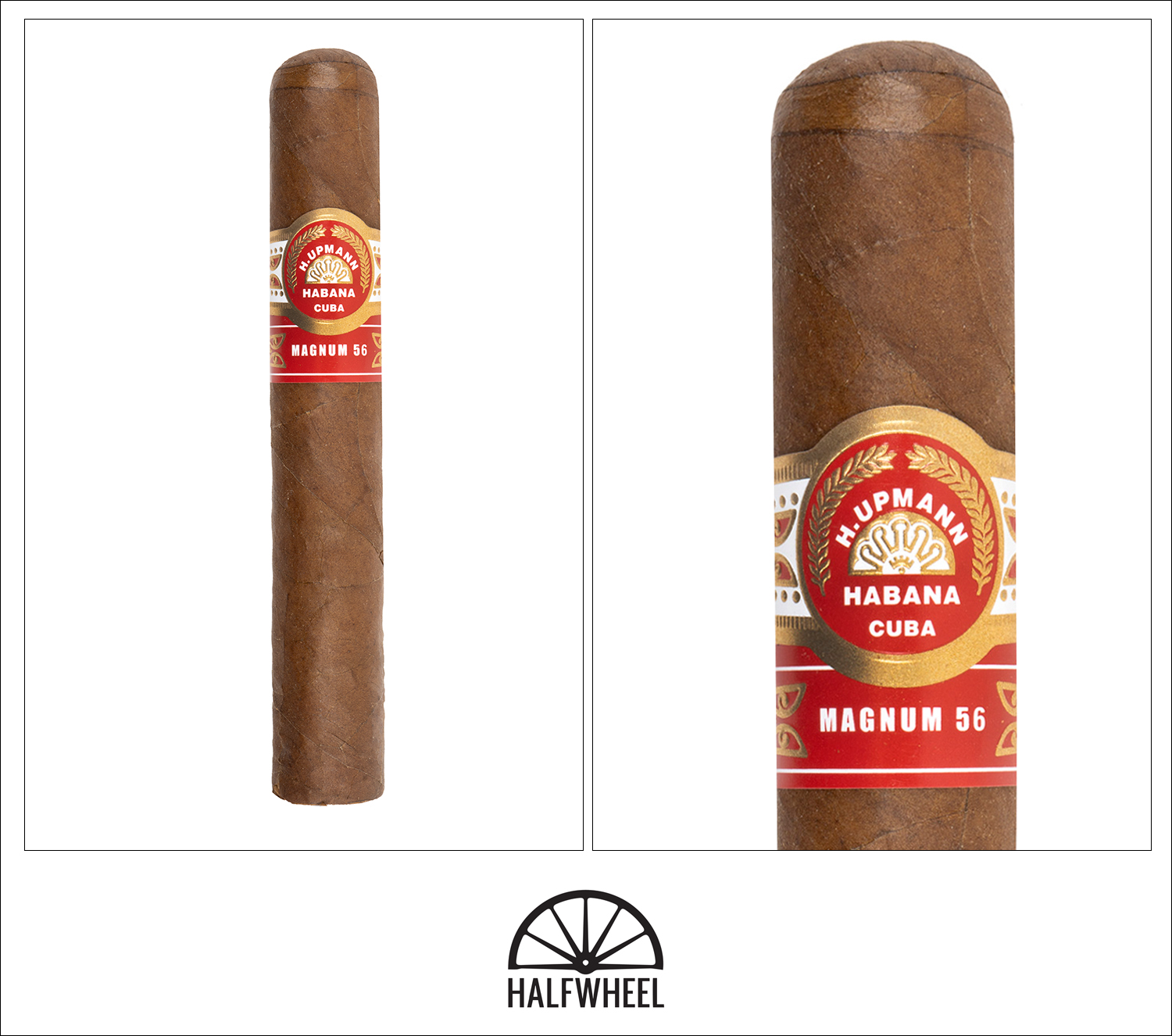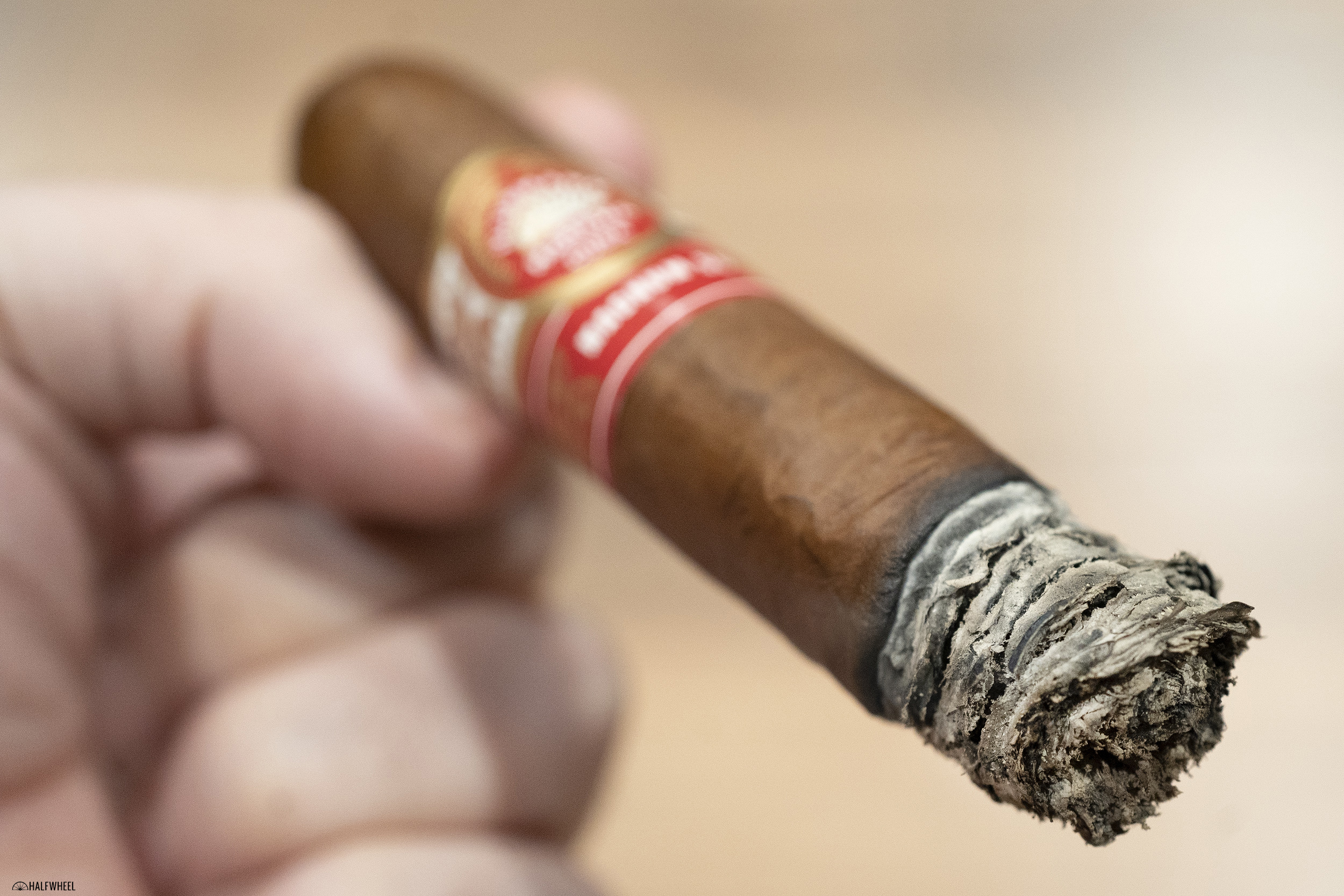As someone who is fairly cognizant of the fact that you can’t have the same experience twice, I find myself tempering my excitement when I hear about a cigar being rereleased. It’s something we’ve seen a number of times, from Davidoff’s Vault Series to a number of companies bringing back a previous limited edition or other cigar that had ceased production for one reason or another.
In October 2019, Habanos S.A. announced that it would be bringing back the H. Upmann Magnum 56, which debuted in 2015 as an Edición Limitada release, except this time it would be offered as an exclusive to the travel and duty-free markets. It also wouldn’t be an Edición Limitada, meaning that the new batch of cigars wouldn’t get the two years of aging before release that the Ediciónes Limitada do.
It measures the same as the Edición Limitada version—which was a new size for Habanos S.A. when it debuted—a double robusto that checks in at 5 9/10 inches (150mm) long with a 56 ring gauge. While that size was originally known simply as the Magnum 56, it appears to have picked up a new vitola name, Unidades, as that is the name used on the jars in which the cigars are packaged.

- H. Upmann Magnum 56 Edición Limitada 2015 (5 9/10 x 56) — 2015
- H. Upmann Magnum 56 (2020) (5 9/10 x 56) — 2020
However, between October 2019 and the cigar’s eventual release in October 2020, the COVID-19 pandemic brought air travel to a screeching halt and, as such, much of the travel and duty-free retail segment. To get the cigars to market, some distributors pivoted and brought the H. Upmann Magnum 56 to traditional retailers.

- Cigar Reviewed: H. Upmann Magnum 56 (2020)
- Country of Origin: Cuba
- Factory: Undisclosed
- Wrapper: Cuba
- Binder: Cuba
- Filler: Cuba
- Length: 5 9/10 Inches
- Ring Gauge: 56
- Vitola: Double Robusto
- Est. Price: $38 (Jar of 20, $760)
- Release Date: October 2020
- Number of Cigars Released: Undisclosed
- Number of Cigars Smoked For Review: 3
The H. Upmann Magnum 56 is a fairly beefy cigar, but what is most striking is the reddish-brown color of the wrapper. At some glances it looks like the shade of a brick, at other times it is the color of a very clay-heavy soil, which in turn reminds me of the warning tracks of some baseball diamonds. It’s a color that works very well with the red in the band and makes for a good overall visual. Beyond that, veins are small and there’s the occasional spot on the wrapper, making each sample pretty attractive. There’s a bit of give to two of the three samples, though they are not as spongey as some Cuban cigars, while the third is fairly firm. The aroma off of the foot is light, with two samples slightly meaty, a bit like jerky being ready to be dehydrated, and another going more towards the kind of cumulative bread smell you’d pick up in a sandwich shop. One sample also has the smell of red apple skin. The cold draws on the first and third sample are a bit firm but don’t seem like they will be problematic. The second is the best of the bunch, smooth and easy with nothing concerning. Flavors are mild and have me thinking of a cold cut platter, a bit meaty but nothing is terribly distinct. There is no pepper to speak of, nor any overt sweetness.
The H. Upmann Magnum 56 starts with a bit of light wood and a slightly creamy base, the kind of profile I generally associate with H. Upmann, if maybe a bit fuller and softer due to the ring gauge. Black pepper comes in not long after the start, appearing first via the retrohale before moving down to the tongue. From there it moves to a flavor that reminds me of salami: slightly meaty but also slightly oily and fatty. I’m a bit concerned about the combustion in the early goings of the first cigar as it seems like the cigar isn’t terribly thrilled about burning, especially if given a bit of a break between puffs. It was enough of a concern in the early goings that it led me to dry box the other two for a couple of hours in hopes of avoiding a repeat issue. Thankfully it did for one of the cigars—more on that in the final notes—and the flavors benefitted as well, not being as weighed down by the excess moisture. There are still points where the tobacco tastes young and a bit harsh, which is concerning for what the rest of the cigar holds. Flavor is medium or medium-plus but can get sharp and harsh, body is medium, and strength is full. Combustion is decent but struggles at times, smoke production is a bit light, and the draw ranges from very good to struggling a bit.

A bit of cedar dances into the profile as the second third gets underway, though the clay doesn’t seem to keen on relinquishing the lead position in the profile. The dryness and tingling effect of that cedar flavor seems to correspond to the relative dryness of the cigars: the first cigar offered a much more muted, restrained expression, while the two that were drier allowed it to shine brighter. While it might occasionally be a bit too vibrant—as was the case with the second and driest sample—I can live with that here knowing that were I not reviewing this, I would likely have a beverage with which to temper it. The second third is where the experiences in the three samples start to diverge, starting with combustion and seemingly directly connected to the flavor. Combustion is still a struggle in the first sample, and while I’m not sure it’s attributable to the relight, the flavor has gotten a bit rough, taking a pepper note into something that grates the back of the throat. Things are much better in the second sample, as the cigar burns with almost no issues, and while that cedar flavor stays dry, it’s not horribly off-putting. The third sample is in the middle, burning decently but not perfectly and with a flavor that is a bit rough and grating but not as harsh as the first sample. There are moments where I think I’m getting aromas of a slightly sweet, slightly cinnamon-coated cereal from the cigar as it rests, a high point of the experience and something that gives me hope as to what this cigar might eventually develop into, though it could only be after months if not years of rest. Flavor is a vibrant medium-full, body is medium-plus, and strength is medium. Draw and combustion are a bit all over the place.

As noted above, the second halves of the three cigars show some real differences, which I’m inclined to attribute to the amount of moisture left in the cigar. The final third starts with a bit of harshness, mainly an evolution of the dry cedar that tastes young more than anything. In the first sample, it’s a rough cedar note that has gotten quite harsh on the palate, so much so that I’m questioning how much longer I want to smoke this. The second cigar isn’t as harsh, but the cedar moves away from its better offerings, and it’s now eliciting a much more lingering irritation in my throat. The final inches of the first sample were pretty much unable to be smoked due to persistent combustion issues, something that the second cigar didn’t struggle with seemingly thanks to a few hours of dry boxing, while the third limped to a barely respectable finish.

Final Notes
- The box code for these cigars is GEM MAY 20.
- Given the combustion struggles of the first sample, I gave the other two a bit of dry boxing, which I generally don’t like to do, but it seemed a better course of action than struggling through them.
- Even though dry boxing fixed the combustion issue, it didn’t fix the flavor problems, which seems will only be addressed with time.
- The is the only cigar in the Habanos S.A. portfolio to use this particular vitola, which is conveniently named Magnum 56.
- Brooks Whittington reviewed the H. Upmann Magnum 54 in March 2016.
- I have to think I have smoked at least one of the H. Upmann Magnum 56 Edición Limitada from 2015, though I can’t say I recall it well enough to compare it to this cigar. If nothing less, it wouldn’t be fair to compare two cigars with five years of age between them, let alone the aging difference with the Edición Limitada’s tobacco.
- One of the samples I was sent was the one wrapped in wax paper, which is done to assist in removal of the first cigar from the jar. That was one of the two cigars that I dry boxed, but it didn’t seem to burn as well as the other, leading me to wonder if I should have removed the wrapping as well.
- It seems fitting that these came in a jar, as the H. Upmann brand is credited with being the pioneer of releasing cigars in jars, known as Amatistas.
- I used a single torch lighter for all three cigars, and there was a point not long into the first sample that I wish I had been using a triple torch for some help getting the cigar lit and relit.
- None of the cigars left me feeling much of a nicotine effect, but the palate gets a pretty thorough workout.
- The cigars for this review were purchased by halfwheel. We paid $38 per cigar on the secondary market.
- Final smoking time was two hours and 30 minutes on average, though two cigars were put down well before they should have been due to combustion issues.
It's tough to like a cigar when two of the three samples struggle to burn and all of them have some pretty noticeable flavor flaws. Even with some dry boxing, the one sample that stood out clearly had some youth to it and was in dire need of at least a year's worth of aging before I'd even begin to be hopeful that the flavors would start smoothing out enough to be enjoyable. Even then, I'd still suspect a couple more years would be needed to get close to its potential. If you have the access to pick these up and the patience to wait them out, you may very well be rewarded for both, but judging by how the three samples I smoked performed now, this is a cigar that should be passed on in favor of something that is not only more enjoyable, but is smokable at a less frustrating level than what these offered.


